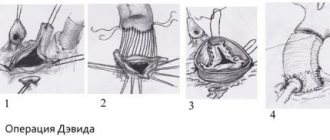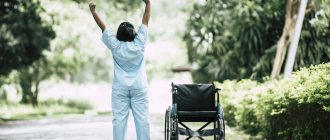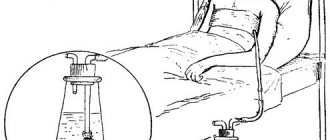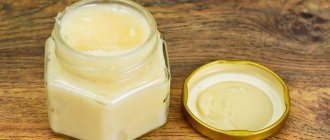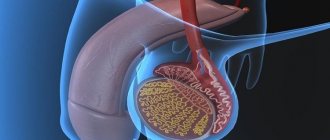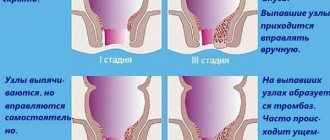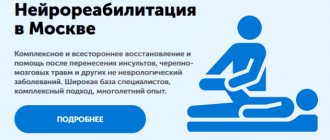Drug therapy after valve replacement
Patients undergoing surgery must take medications prescribed by their cardiologist.
- When installing donor valves, the patient will have to take immunosuppressive medications after surgery and for life. This reduces the risk of foreign tissue rejection.
- If a patient has symptoms of cardiovascular disease after valve replacement (for example, he has angina, arterial hypertension, etc.), he should take appropriate medications regularly and on an ongoing basis. The composition of therapy and dosage of medications are determined by the doctor. If at some point the recommended treatment regimen no longer “works” as before, you should definitely consult a doctor for examination and treatment correction.
- If a patient needs valve replacement due to rheumatic heart disease, they may need to take periodic antibiotics after surgery to prevent rheumatic heart attacks.
- All patients with mechanical and biological valves are prescribed anticoagulant therapy. A foreign body is actually introduced into the heart, to which the blood system reacts with increased coagulation. As a result, blood clots can form on the valve, which complicate its operation, can break off and enter the bloodstream, resulting in dangerous and even life-threatening complications - stroke, vascular thrombosis, pulmonary embolism.
Anticoagulants prevent the formation of blood clots, and therefore their use is mandatory. The most commonly used indirect anticoagulant is warfarin. People who have a biological valve should take warfarin for 3-6 months (with some exceptions), while those who have a mechanical valve will need to take the drug continuously.
Anticoagulants are drugs that actually save the lives of patients with artificial valves. However, in addition to benefits, they can also cause harm. The ability of blood to clot is a protective mechanism that prevents blood loss when injured. If anticoagulants are taken in excess, when clotting is suppressed too much, the patient may experience corresponding complications, sometimes even severe bleeding and hemorrhagic stroke.
To avoid this, it is very important to monitor the state of the blood coagulation system. Therefore, patients taking warfarin need to monitor the INR (international normalized ratio; it determines the adequacy of anticoagulant therapy). It is usually maintained at a level of 2.5-3.5 (there may be some variations depending on the specific case). A blood test to determine INR should be taken monthly.
Some patients are also recommended to take antiplatelet drugs - aspirin-based drugs - after valve replacement.
Rule No. 4: Daily physical therapy exercises
Immediately after discharge, the doctor should give a referral for exercise therapy. But you can do simple exercises at home.
Lie down on the bed and bend your knees. Rub your calf muscles vigorously, moving from your knees to your heels. After such artificial warming up of the muscles, sit on the edge of the bed with your feet on the floor. Straighten your legs one at a time until a slight tremor appears in the knee area.
While sitting on the bed, you can also raise your arms one by one until fully straightened. But this exercise is dangerous for those who have undergone a thorectomy. It is worth paying attention to breathing exercises.
Physical activity after valve replacement
Often, patients are sent for valve replacement if, before surgery, there were manifestations of chronic heart failure, which impair exercise tolerance and do not allow patients to move freely and actively.
The operation improves well-being, but patients often have no idea whether they can increase the load, in what specific mode to do this and to what limits. To determine the exercise regime, it is best for the patient to undergo a rehabilitation program in a sanatorium. An individual set of physical exercises will be selected for him, which he will perform under the supervision of a doctor. Gradually, taking into account the dynamics, the motor mode will expand. As a result, by the end of the rehabilitation period, a person will be able to live a full active life, freely endure everyday and other stresses.
If the patient does not plan to undergo rehabilitation in a sanatorium, he should contact a cardiologist with questions related to physical activity. You can clarify any questions with your doctor: the ability to engage in certain sports, lift weights, drive a car, etc.
In the first weeks, during the recovery period after surgery, it is very important to control the degree of stress. It is necessary to be active to such an extent that, on the one hand, it does not overload the heart, and on the other, does not slow down recovery and does not contribute to the development of complications.
Some patients move little because planning loads and performing exercises require discipline, diligence, and effort. Those who are too lazy to exercise should remember that physical activity improves the prognosis of heart disease, trains the cardiovascular system, has a general healing effect and helps to achieve better results from the operation.
Cardiac rehabilitation methods
Comprehensive rehabilitation is a process that is carried out using techniques that are acceptable to the patient and his environment. Specific recommendations vary significantly, but in general several areas can be distinguished:
- Physiotherapy. Classes are conducted under the supervision of a rehabilitation specialist. Exercise therapy in the acute period – exclusively in a gentle mode with a gradual increase in load. If the recovery period is favorable, fractional walking on steps is allowed. Cardio exercises and swimming pool classes are included.
- Drug therapy. Its main task is to reduce or prevent complications. The medications prescribed in the postoperative period are different. These include anticoagulants, anti-inflammatory drugs, and phlebotonics. Only a doctor is responsible for selecting medications; self-prescription is unacceptable.
- Physiotherapeutic procedures. This can be halotherapy, supravenous laser irradiation, reflexology, massage, carbon dioxide baths, general magnetic therapy, etc. For example, massage allows you to cope with physical inactivity even when almost all types of activity are prohibited for the patient. Reduces pain, stress on the heart, stimulates lymph flow and blood circulation.
- Proper nutrition. The goal is to limit harmful foods for the cardiovascular system and increase healthy ones, normalizing weight.
- Psychological support. Psychological support is carried out with the aim of relieving emotional stress, developing in the patient an adequate attitude towards his condition, and optimizing the treatment process.
- Physiotherapy. Hardware rehabilitation methods eliminate complications and speed up recovery.
- Lifestyle changes: giving up alcoholic beverages, smoking, solarium.
Only together with modern treatment methods can physical therapy be effective and lead to the desired result. All rehabilitation equipment is selected for a specific patient, taking into account his concomitant diseases and condition. When drawing up the program, the regularity and dosage of classes, monitoring of condition and effectiveness are observed. Competent gradual rehabilitation using special equipment allows you to return to normal life.
Diet after valve replacement
Middle-aged and elderly patients, especially those with coronary heart disease, are advised to follow a special diet. It is necessary to reduce the content of animal fats and easily digestible carbohydrates in the diet, as well as reduce the consumption of table salt, coffee and other stimulants. At the same time, you should enrich your diet with vegetable oils, fresh vegetables and fruits, fish and protein products.
Young patients who do not have atherosclerosis and its complications may not be so strict about their diet, although it is best for them to formulate a diet in accordance with the canons of a healthy diet - to prevent IHD.
Excessive alcohol consumption is contraindicated in all patients after heart valve replacement.
Work after valve replacement
Within a few weeks after surgery, patients usually manage to restore their ability to work at their previous level. In some cases, a transition to easier working conditions is required. Sometimes patients are given a disability group.
The above formulations are quite streamlined, but it is impossible to give specific figures here. Much depends on which valve was prosthetized, what type of artificial valve was, in connection with what disease the operation was performed, and in what field the person is employed.
In general, the forecast for work activity is favorable. Even professional athletes returned to sports after this surgical intervention and successfully continued their careers.
Main objectives of rehabilitation
Cardiac rehabilitation is a whole complex of psychomedical measures aimed at:
- return to social activity;
- improving quality of life;
- prevention of pathology development;
- optimization of therapy to prevent disease progression;
- restoration of physical activity and performance;
- maintaining performance;
- disability prevention;
- regulation of a person’s psychological state in order to adapt him to everyday conditions.
One of the important tasks of rehabilitation is to create sustainable motivation for carrying out preventive measures throughout later life. And this is a joint responsibility of the doctor and the patient. Cardiac rehabilitation care is provided:
- based on diagnosis;
- regardless of the duration of the illness;
- in the absence of contraindications to performing various procedures;
- subject to stability.
Main stages
There are three stages of cardiac rehabilitation:
- The first stage is a hospital where the patient is under the supervision of doctors;
- The second stage is a cardiological sanatorium;
- The third stage is outpatient observation after a heart attack or surgery.
The last stage of cardiac rehabilitation is the longest and determines the subsequent development of the disease.
Other recommendations
There are a few other mandatory tips that patients undergoing valve replacement surgery must follow.
- If you experience symptoms of cardiac problems (chest pain, a feeling of interruptions in the heart), signs of circulatory problems (swelling in the legs, shortness of breath) and other unexpected symptoms, you should immediately consult a doctor.
- Patients who have had a biological valve installed are not recommended to take calcium supplements. In their diet, it is advisable for them not to overuse products containing it: milk and dairy products, sesame seeds, nuts (almonds, Brazilian), sunflower seeds, soy.
- All doctors, including the dentist, need to warn the patient that he has an artificial valve installed.
Following the necessary recommendations will help the patient maintain excellent health for a long time and live a full life.
Results of cardiac rehabilitation
The positive effects of cardiac rehabilitation include:
- improvement of carbohydrate metabolism;
- normalization of blood pressure indicators;
- increased physical activity;
- normalization of lipid profile;
- slowing down the development of atherosclerosis;
- improvement of psycho-emotional and physical condition;
- smoking cessation;
- reduction in body weight.
Cardiac rehabilitation is indicated after surgery, regardless of the severity of the condition. If you conscientiously follow all medical recommendations and take good care of your health, 85% of patients return to their normal lifestyle.
